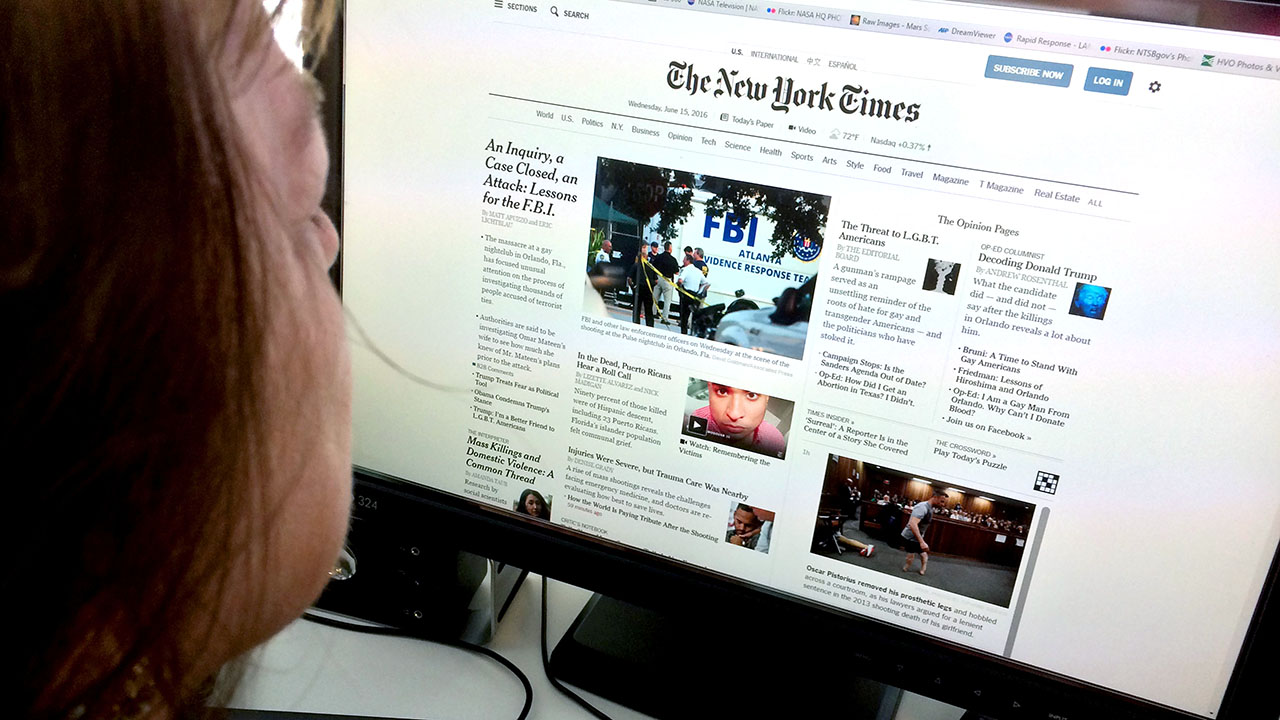Keep Updated with Real-Time Reporting by DW News Reporters
Keep Updated with Real-Time Reporting by DW News Reporters
Blog Article
The Development of Journalism in the Age of News Online
In the quickly altering landscape of journalism, the electronic age has ushered in a new period where the immediacy of on-line information improves both its creation and usage. As electronic systems multiply, they enhance interactivity and widen the reach of journalism, yet all at once test conventional standards with the swift spread of information and misinformation alike. The increase of resident reporters and independent voices better complicates the story, adding to a dynamic yet perilous media ecosystem. As we navigate these complexities, one should question the future of journalistic honesty and how it can be protected amidst these transformative adjustments.

Surge of Digital Information Platforms
The increase of digital news systems has essentially changed the landscape of journalism, marking a shift from conventional print media to vibrant, on-line rooms. This development was propelled by improvements in technology and the increasing availability of the internet, which allowed news to be distributed quickly and broadly. Unlike their print equivalents, electronic systems can immediately upgrade web content, supplying real-time information coverage and analysis that appeals to the contemporary viewers's demand for immediacy and significance.
Digital systems have actually likewise widened the scope of journalism, allowing a diversification of perspectives and voices. With reduced barriers to entry, independent reporters and smaller sized news organizations can get to worldwide target markets, testing the monopoly as soon as held by developed media corporations. This democratization of information has improved the public discussion, using differed stories and catering to specific niche rate of interests that were formerly underserved.
In addition, the integration of multimedia components such as video, sound, and interactive graphics improves storytelling, making information more easily accessible and appealing (dw news). This multimedia approach not only brings in a broader audience however also aids in the comprehension of intricate tales. Essentially, electronic platforms have redefined journalism, promoting development and versatility in an ever-evolving media atmosphere

Effect of Social Media Site
Social media systems have actually further reinvented journalism by altering just how news is eaten and shared. These platforms have actually equalized information dissemination, making it possible for any individual with net access to report occasions in real-time. This immediacy has actually put typical information electrical outlets in a race to keep up, compelling them to embrace much faster reporting methods. Additionally, social media has actually expanded target markets, providing journalists access to international viewership beyond geographical restrictions.

The interactive nature of social networks promotes interaction, permitting target markets to join conversations, share point of views, and contribute to news stories. This interaction boosts the vibrant in between journalists and their audiences, promoting a more participatory kind of journalism. Nevertheless, this likewise positions tremendous stress on journalists to generate material that resonates with audiences, frequently prioritizing sensationalism to capture interest.
Additionally, social media sites platforms have become important devices for journalists to source stories, gauge popular opinion, and network with market peers. By monitoring trending topics and user-generated web content, journalists can reveal stories that might or else be overlooked. Yet, the reliance on social networks also demands a vital evaluation of sources to guarantee the trustworthiness of info shared. In this progressing landscape, adaptability remains important for reporters to flourish.
Challenges of Misinformation
Among the electronic transformation of journalism, one considerable difficulty is the prevalent spread of misinformation. In an age where info is swiftly obtainable and bountiful, identifying in between reliable news and produced web content has ended up being progressively difficult. The sheer volume of information shared throughout different online platforms often obscures the line in between truth and fiction, positioning a substantial threat to the honesty of journalism.
Misinformation can spread quickly with social media, where formulas prioritize interaction over precision, inadvertently amplifying incorrect stories (dw news). This not only undermines public count on media pop over to this web-site organizations however additionally promotes an atmosphere where deceptive content can affect public point of view and decision-making procedures. The challenge for journalists is twofold: to unmask frauds effectively and to promote extensive requirements of fact-checking and confirmation
More complicating this problem is the presence of deepfakes and sophisticated disinformation campaigns that take advantage of progressed innovations to develop deceptive material tantamount from genuine coverage. As these innovations evolve, so need to the devices and techniques utilized by reporters to combat them. Addressing false information calls for partnership between media organizations, modern technology firms, and policymakers to establish detailed techniques that protect the credibility of details in the digital age.
Function of Citizen Reporters
Browsing the landscape of false information highlights the transformative influence of citizen journalists within the electronic world. As standard media outlets come to grips with the sheer rate and quantity of news circulation online, resident reporters-- common individuals equipped with smartphones and accessibility to social networks-- are playing a progressively essential duty. These grassroots contributors have ended up being instrumental in covering events quickly, often supplying real-time updates from the ground before mainstream media can respond.
Person reporters have democratized information reporting, magnifying voices that might otherwise continue to be unheard. By leveraging systems like Twitter, Facebook, and Instagram, they offer diverse viewpoints that test the narratives frequently pressed by developed media. This democratization, nevertheless, also provides difficulties. The absence of official training or content oversight can bring about the spread of unproven details, complicating efforts to differentiate fact from fiction.
However, citizen journalism is reshaping the media landscape, engaging standard electrical outlets to adjust by incorporating user-generated web content right into their coverage. By fostering community involvement and motivating participatory journalism, these electronic writers add to a more comprehensive and vibrant news environment. As person journalists proceed to evolve, their duty fit public discourse stays a necessary element of contemporary journalism.

Future of Journalistic Honesty
The proliferation of YOURURL.com digital systems has actually democratized info dissemination, allowing a wider range of voices to add to the news landscape. This has likewise led to the spread of misinformation and the erosion of count on in media.
The increase of artificial knowledge and algorithm-driven web content curation further makes complex the landscape. While AI can improve coverage by analyzing vast datasets and recognizing fads, it likewise postures risks of prejudice and adjustment. Reporters have to for that reason stay cautious, ensuring that innovation works as a tool for truth rather than distortion.
Furthermore, the financial stress on conventional media electrical outlets necessitate innovative company versions to sustain top quality journalism. Subscription-based models, not-for-profit financing, and collaborations with tech business are emerging as possible solutions. Yet, they have to be pursued without jeopardizing content independence.
Ultimately, the future of journalistic honesty relies on the commitment of journalists and media organizations to copyright transparency, accountability, and an unwavering commitment to fact, amidst a swiftly changing digital globe.
Final Thought
The advancement of journalism in the digital age presents both obstacles and chances. The rise of electronic news systems and social media sites has democratized information circulation, empowering a varied selection of voices, including person reporters. Nonetheless, these innovations demand alert efforts to combat false information and maintain journalistic integrity. The future of journalism rests on the ability to adapt ingenious business models that sustain quality reporting while maintaining the trustworthiness and trust fund crucial for informed public discussion.
The rise of electronic news platforms has essentially changed the landscape of journalism, noting a shift from standard print media continue reading this to dynamic, on the internet areas. With lower barriers to access, independent reporters and smaller news companies can get to global audiences, challenging the syndicate when held by developed media conglomerates.Social media systems have actually better changed journalism by altering how information is taken in and shared. As traditional media outlets grapple with the sheer speed and quantity of information dissemination online, citizen reporters-- normal individuals armed with smartphones and accessibility to social media-- are playing a progressively crucial function. The rise of digital information platforms and social media has actually democratized details dissemination, encouraging a diverse range of voices, including resident reporters.
Report this page